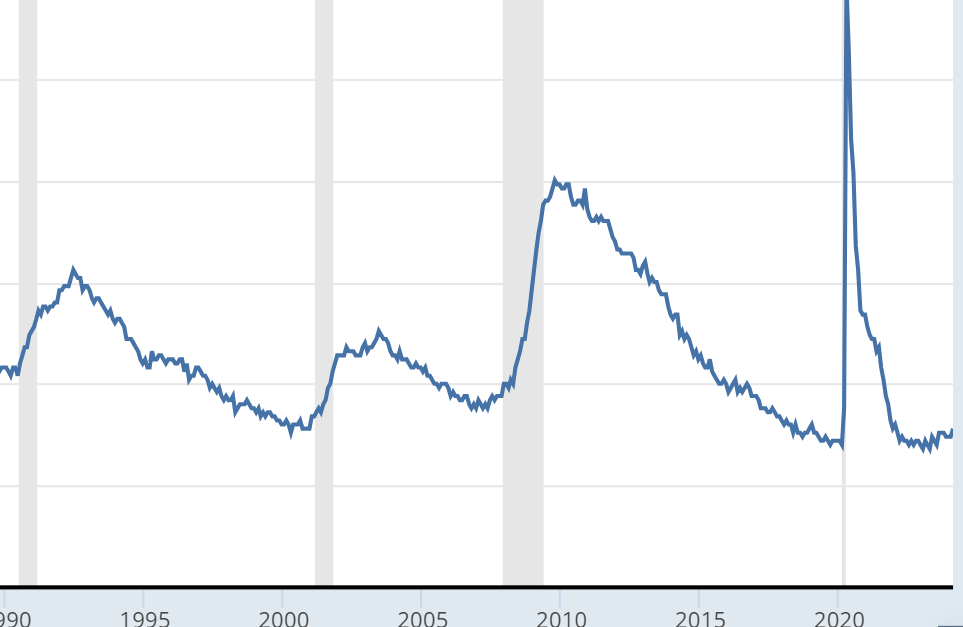Oregon’s unemployment rate ticked up to 4.1% in January, according Oregon Employment Department data released Tuesday.
The state’s jobless rate has gone up and down since unemployment dropped to historic lows in August of 2024, fluctuating between 3.4% and 4.2%. Oregon’s jobless numbers are slightly higher than the national average but remain below average annual numbers for the state.
In January, Oregon’s seasonally adjusted nonfarm payroll employment shed 4,900 jobs, following a revised gain of 1,900 jobs in December. The losses were largest in professional and business services, leisure and hospitality, transportation, warehousing and utilities and construction. Job gains in January were largest in the health care and social assistance and manufacturing sectors.
Oregon Business spoke to OED’s employment economist Gail Krumenauer about the latest numbers and what they mean.
This interview has been edited for length and clarity.
How would you categorize the current trend in Oregon’s employment?
We’ve seen this up and down in terms of some monthly job gains and some monthly job losses. If we look at January, Oregon employers dropped 4,900 jobs from non-farm payrolls. In December we added 1,900, but in the two months before that, those were losses. It’s not necessarily continuing losses, I would characterize it more as kind of little net changes over the past year.
What we saw over the past year is that we had a relatively large job gain in January of last year, more than 13,000 jobs, but then for the rest of the year — February through December — job gains and losses offset each other for net zero.
As to what’s driving it, it’s different from one area of Oregon’s economy to another. For example, professional business services had the largest job decline in January, losing 1,700 jobs. Professional and business services is a really big and diverse sector of Oregon’s economy, and there’s kind of three parts underneath. The first one is professional and technical services, which is like architecture, engineering, design and legal stuff. The second part is like corporate headquarters, and the third part is administrative and waste services — that includes things like call centers, temp and help services and building and ground maintenance. The administrative and waste services part has been driving more than half of the losses in professional and business services over the last years.
Other sectors where we’ve seen some declines are real estate and rental leasing; that’s probably got a lot to do with high interest rates. So, there are different reasons in different sectors of Oregon’s economy for what’s moving job trends in a certain way.
What can these numbers tell us about Oregon’s workforce moving forward?
One thing that I thought was a positive note in this month was on the labor force side. We’ve seen the labor force grow slightly in recent months.
There’s been concern about population, and whether Oregon’s population is going to continue or resume growth in the future, so seeing those slight labor force increases and seeing labor force participation both staying relatively stable and the size of the labor force either being stable or increasing slightly, I see as being a positive sign.
Construction also lost jobs. Are interest rates impacting construction?
Construction employment has been pretty flat over the last year. We saw the number of housing starts slow down last year, and yes, that could also be related to the cost of borrowing money, whether or not people can finance as much as they were a couple of years ago when interest rates were, what, 2% for new housing?
Also, not all construction projects are cash-financed, so the cost of money to build is higher as well, and labor inputs are more expensive across the board in Oregon than they were a couple of years ago.
Oregon’s health care sector defied the trends. Why is that?
We’ve seen private health care and social assistance add the most jobs over the last month and add the most jobs over the past year. And so we’ve seen that after stagnating in 2021 and 2022, it is kicking back into its long-term trajectory of being a big, large growing sector regardless of economic conditions.
Largely, that’s due to demographics. We have an aging population, as does the United States. And that lends itself to a greater need for health care over the course of time.






